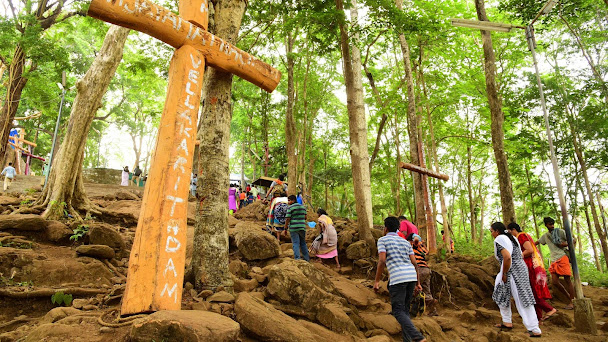Thangasseri Fort: A 500 year old structure still stands
Kerala has some of the most iconic structures along its length & breadth, some well preserved & some in a dilapidated state. The coastline of Kerala is what attracted all the foreign powers to start their colonies here. It is also to be known that Kerala was the entry point for new religions & trade from foreign lands to South east Asia. The first colonists who ruled these parts were the Portuguese who came in the start of the 16th century & ruled for over a century until the Dutch took over. The Portuguese built many forts, structures along the coast. One among them is the St Thomas fort or commonly called Thangasseri fort.
The Portuguese established a good trade relation with the Cochin Rajah after the altercation of Vasco Da Gama with the Zamorins, making them move south. The trade of the Cochin region was controlled by the Jews & the Portuguese had to establish their supremacy. The responsibility was given to Afonso De Albuquerque who became the second Governor of Portuguese India. He was also called the Duke of Goa after the Portuguese established their first colony there. It was his idea to have a fort built along the sea south of the Cochin rule & he earmarked the Thangassery coast for this. The project was initiated by Albuquerque but it was completed only post his death in 1519 AD. The fort was completed with tall walls, three towers & four bastions, it was named Fortaleza de São Tomé. The complex of the fort was a large one which housed the barracks & cellars. The fort as per the old documents was considered to be one of the largest built by the Portuguese in the western world. It is also to note that the whole structure was built with sandstone as compared to laterite stones which was common material in forts used during the time.
Today one look at the fort will make you wonder whether all these descriptions are truly well placed as there are no walls or bastions for us to see & the story of such a state has been one of sorry events. The Portuguese continued to use the fort as their military bastion for over a century until the Dutch came & they conquered the fort in 1658 AD after a naval warfare. The Dutch renamed the fort as per their dialect to St Thomas Fort. The Portuguese continued their effort to take over the fort & they were successful a year later but soon the Dutch attacked in an orchestrated manner to not just control the fort but in the process of war destroyed most parts of the fort. The Portuguese after the loss are said to have moved towards Goa ending their trade with Malabar & Cochin. The Dutch continued to control the Thangasseri along with other plains in Kollam until the Travancore King Marthanda Varma defeated the Dutch army in the war of 1741 AD. The fort stayed under the control of the Travancore regime until the British acceded it under the empire based on a treaty with the kings. The Dutch who destroyed the fort did make efforts to reconstruct the fort but after the fort fell into the hands of the British, it was in a state of neglect & finally was abandoned by the British who made the Anjengo fort further south their bastion. The fort after Independence continued to go into dilapidation & today only the front entrance tower stands making all visitors remember this historic monument.
Today the fort area is a protected zone as the archaeological department looks after the upkeep & no visitors are allowed to enter the complex. The department did try to restore some parts of the fort but mostly it is a lost structure. The irony of the structure is that it is one place which leaves behind the legacy of the invaders who came one after the other to rule. The Thangasseri fort, lighthouse & beach are places which one should visit to understand the 500 year old historical value.
.jpeg)



Comments
Post a Comment